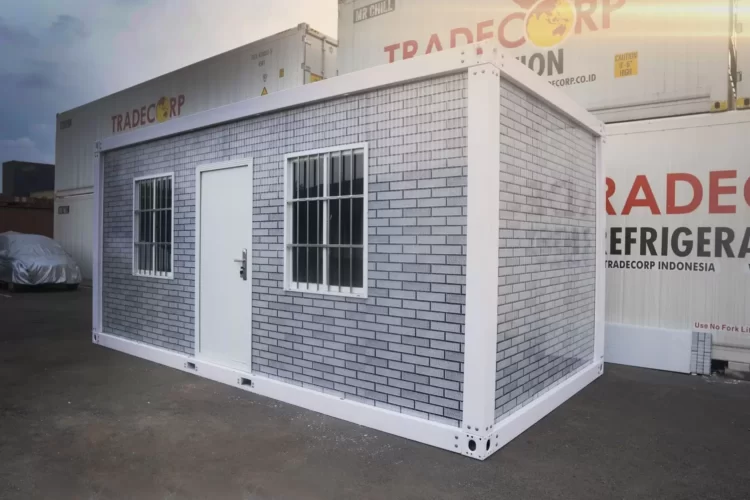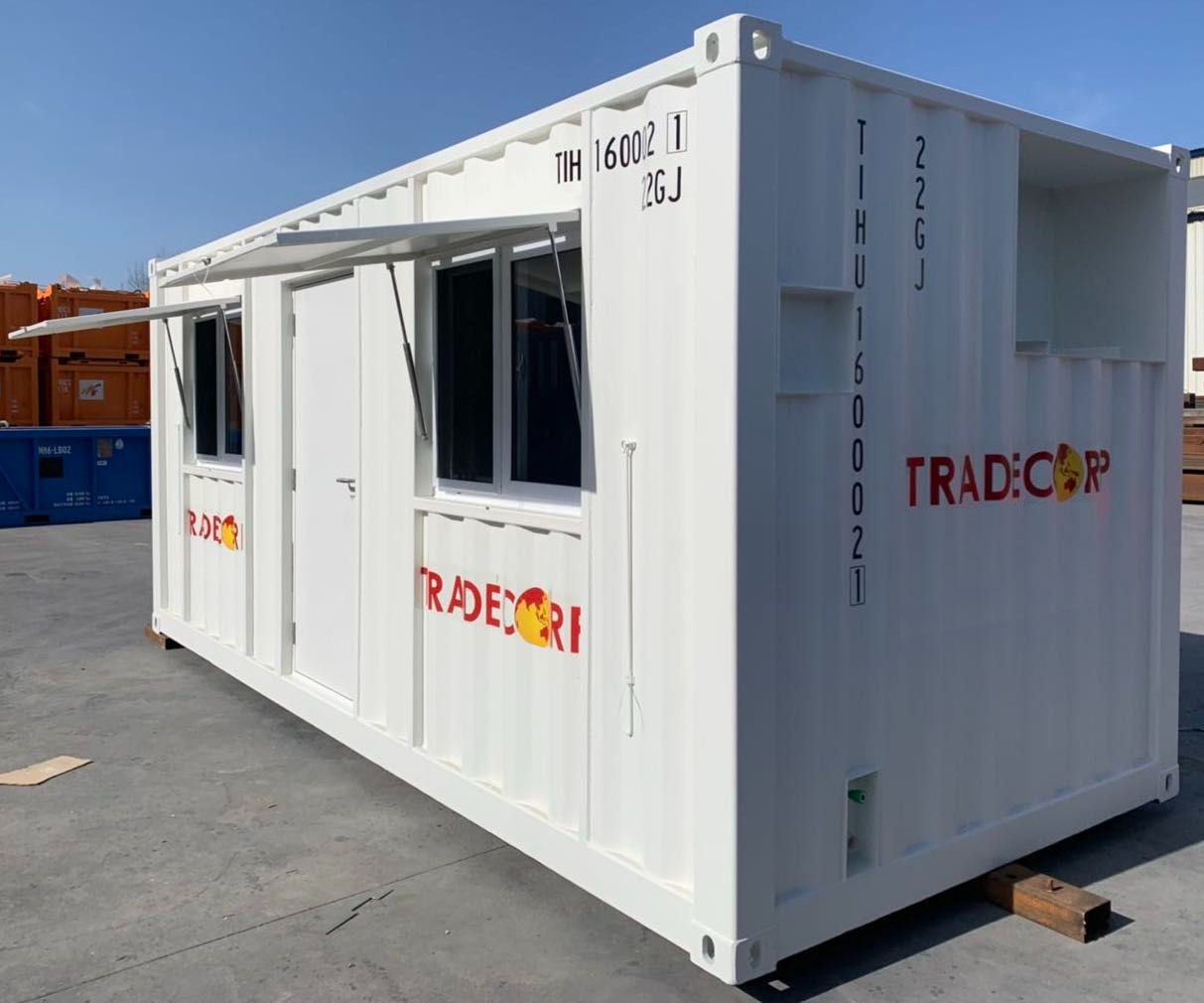Shipping containers have been a conventional means of transporting cargo for a long time. However, the way we use them is constantly evolving. People are increasingly exploring new and innovative ways to modify shipping containers for a wide range of purposes beyond just transportation. If you are interested in customizing your own container, there are many options available to suit your needs. Shipping container modifications can transform a standard container into a mobile office, a pop-up shop, a restaurant, a workshop, or even a home. With the right modifications, a shipping container can be adapted to fit almost any function or environment. This blog aims to provide you with useful information and tips to help you get started with shipping container modifications.
What are shipping container modifications?

Modifying a shipping container can be done in a variety of ways. The initial step is to identify the intended outcome of the modification. Are you looking to personalize the container by adding insulation or extra locks? Or is it to create a modular storage unit, a living space, or an office out of the shipping container? It’s important to have a clear idea of your objective before proceeding with the modification process.
After deciding the end goal, you can begin to plan the necessary design techniques and tools needed to achieve it. There are many things to consider, such as the layout, materials, colors, and finishes, depending on the specific modification you take. Careful planning and execution can lead to a successful transformation of a shipping container into a customized space that fulfills your specific needs and preferences.
Different types of container modifications
Here are a few options available for customizing containers to meet your specific requirements.
1. Doors and flooring
Shipping containers come with standardized cargo doors, but these can be modified to suit specific requirements, such as adding a personnel door or a roll-up door for easier access. The type of flooring in a container is also a critical aspect of customization, as it determines the level of durability and insulation. Different flooring materials, such as wood, steel, or aluminum, can be chosen depending on the purpose of the container. Customizing doors and flooring can enhance the container’s functionality and make it more suitable for its intended use, whether that be as a home, office, or storage facility.
2. Insulate your container
When customizing containers, insulation is a crucial option to consider. Insulation helps regulate the internal temperature of the container and prevent heat transfer, which is important for ensuring a stable and comfortable environment inside the container. Insulation can also help to increase energy efficiency and prevent moisture buildup, which can lead to issues like mold and mildew.
For instance, if the container is being used as a workspace, insulation can help maintain a comfortable temperature and reduce external noise, creating a more conducive work environment. Similarly, if the container is being used as a living space, insulation can help to create a comfortable and energy-efficient home. In addition, insulation can also help to improve the durability and longevity of the container, as it protects the container from the elements and prevents rust and corrosion.
Depending on your specific needs, there are various types of insulation that you can use to insulate a shipping container. These include rigid polystyrene foam panels, styrofoam, closed-cell spray foam, loose-fill insulation, and batt insulation. Each of these options offers different benefits in terms of cost, effectiveness, and ease of installation. It’s important to consider these factors when choosing the right insulation for your container.
Other popular container modifications to consider
Portable office or workspaces
Shipping containers are a popular choice for businesses seeking a mobile and secure workspace. These containers can be customized with electrical connections, climate control systems, and other features to create a comfortable and functional office space. They are perfect for businesses that require a temporary or semi-permanent workspace and prefer not to invest in traditional office spaces. The versatility of shipping containers allows them to be easily transported and reassembled as needed, making them an excellent option for companies that operate in different locations. They are also a cost-effective solution as they eliminate the need for costly construction projects.
Pop-up shops
Containers are easily transportable and can be modified to suit the specific needs of a business. Pop-up shops are becoming increasingly popular as a way for businesses to test new markets, generate buzz, and reach new customers. The affordability of shipping containers also makes them an attractive option for small businesses and entrepreneurs looking to launch a new venture. Using a container for a pop-up shop is an eco-friendly alternative to traditional construction, as it repurposes materials that would otherwise go to waste. A shipping container can offer a versatile, affordable, and eco-friendly solution for businesses looking to create a pop-up shop.
Extra storage spaces
Conex containers are built to withstand tough conditions and handling during long-distance transportation, making them durable, safe, and secure. For this reason, many individuals and businesses purchase these containers for storage solutions. Homeowners typically acquire storage containers to store household equipment, while business owners repurpose them for warehousing, allowing clients to keep their inventory safe and protected from external elements. Shipping containers can be placed on-site and accessed easily, making them a convenient option for businesses that require regular access to their stored items.
Temporary Structure for Construction or Other Purposes
Sea containers are transformable into temporary structures for construction sites, events, or other purposes. These containers can be modified with features like electricity, lighting, and air conditioning, creating a comfortable and functional space for workers or guests. They are an affordable and flexible option for temporary structures, eliminating the need for costly and time-consuming construction. The portability of shipping containers also allows for easy transport to different locations. Converting a shipping container into a temporary structure offers a convenient and cost-effective solution for a variety of purposes, such as site offices, accommodation units, ticketing booths, toilets for events, and more.
Café containers
Another alternative option for shipping container conversions is creating a unique and eye-catching café space. They can be equipped with electrical connections, lighting, and other features to create a fully functional café. The mobility of shipping containers also allows them to be relocated to different locations or events, making them an ideal option for pop-up cafés. For entrepreneurs and businesses looking to launch a new venture, converting a shipping container into a café space offers a customizable, cost-effective, and eco-friendly solution.
Disaster shelters
Shipping containers are convertible into disaster shelters to provide temporary or semi-permanent housing for people affected by natural disasters or other emergencies. These containers are durable and secure, making them an ideal option for providing protection and shelter to those in need. They can be outfitted with insulation, ventilation, and other amenities to create a safe and comfortable living environment. Their portability makes them a flexible and efficient solution for emergency housing. Converting shipping containers into disaster shelters offers a practical and affordable way to address urgent housing needs in times of crisis.
Multi-story buildings
Sea containers have gained popularity as a versatile option for constructing multi-story buildings, offering an eco-friendly and cost-effective solution for both residential and commercial purposes. With proper insulation, ventilation, and other features, they can provide comfortable and spacious living or working spaces. The modular design of shipping containers also allows for easy expansion or reduction of the building size, making them a flexible and efficient option. Transforming shipping containers into multi-story buildings offers a customizable and eco-friendly solution for those seeking affordable and efficient construction options, e.g., container hotels.
Tips and Considerations Before Modifying a Shipping Container
Plan the modifications: Plan the modifications before starting the project. Consider factors such as insulation, ventilation, lighting, and electrical wiring.
Hire professionals: Modifying a shipping container can be a complex task, and it’s essential to hire professionals who have experience in the field to ensure quality work and safety.
Consider the environment: Depending on the location, modifications such as insulation and ventilation may be necessary to ensure comfortable living conditions.
Budget accordingly: Modifying a shipping container can be an affordable alternative to traditional construction, but it’s important to budget for the project’s expenses, including materials, labor, and permits.
By considering these tips and factors, modifying a shipping container can be a viable solution for creating additional space that meets your specific needs.
Common FAQs about shipping container modifications
What are shipping container modifications?
Shipping container modifications refer to the process of customizing a shipping container to meet specific requirements. This could involve adding windows, doors, or insulation to make the container suitable for a particular use.
What are the benefits of shipping container modifications?
Shipping container modifications can help to create custom spaces that are suitable for a variety of applications, such as offices, living spaces, or storage areas. They are also cost-effective and eco-friendly, as they make use of existing shipping containers that would otherwise go to waste.
Can I modify a shipping container myself?
It is possible to modify a shipping container yourself if you have the necessary skills and equipment. However, it is recommended that you work with a professional to ensure that the modifications are done safely and correctly.
How much does it cost to modify a shipping container?
The cost of shipping container modifications varies depending on the type and complexity of the modifications required. Simple modifications such as adding windows or doors may cost a few hundred dollars, while more complex modifications such as installing plumbing or electrical systems may cost you several thousand dollars.
Purchasing a Conex Box
Tradecorp has a wide range of customization options for shipping containers for sale. We will help you find the perfect container solution for your business or project needs. Find a variety of types and sizes of shipping containers, from standard ones to tanks, and customizable ones. We will have them ready for you with the best offer. Fill out the contact form on our page and we will respond to your inquiry promptly

